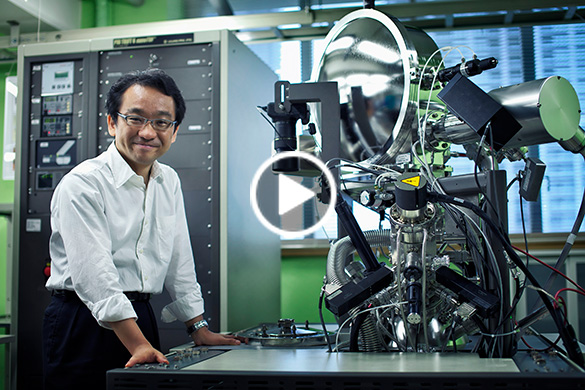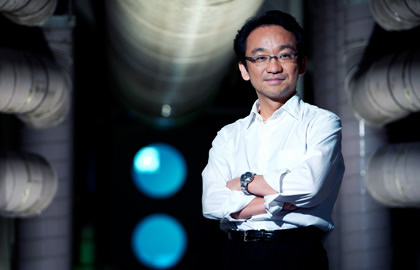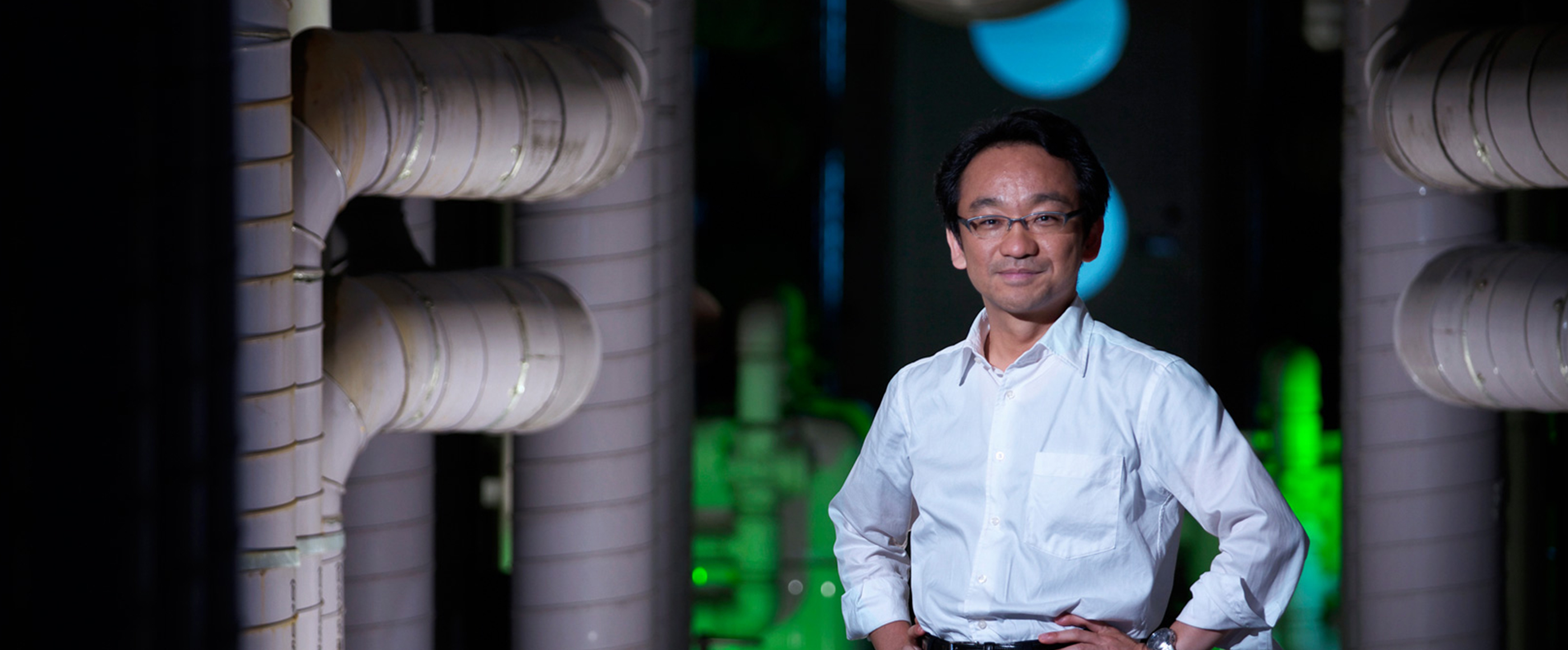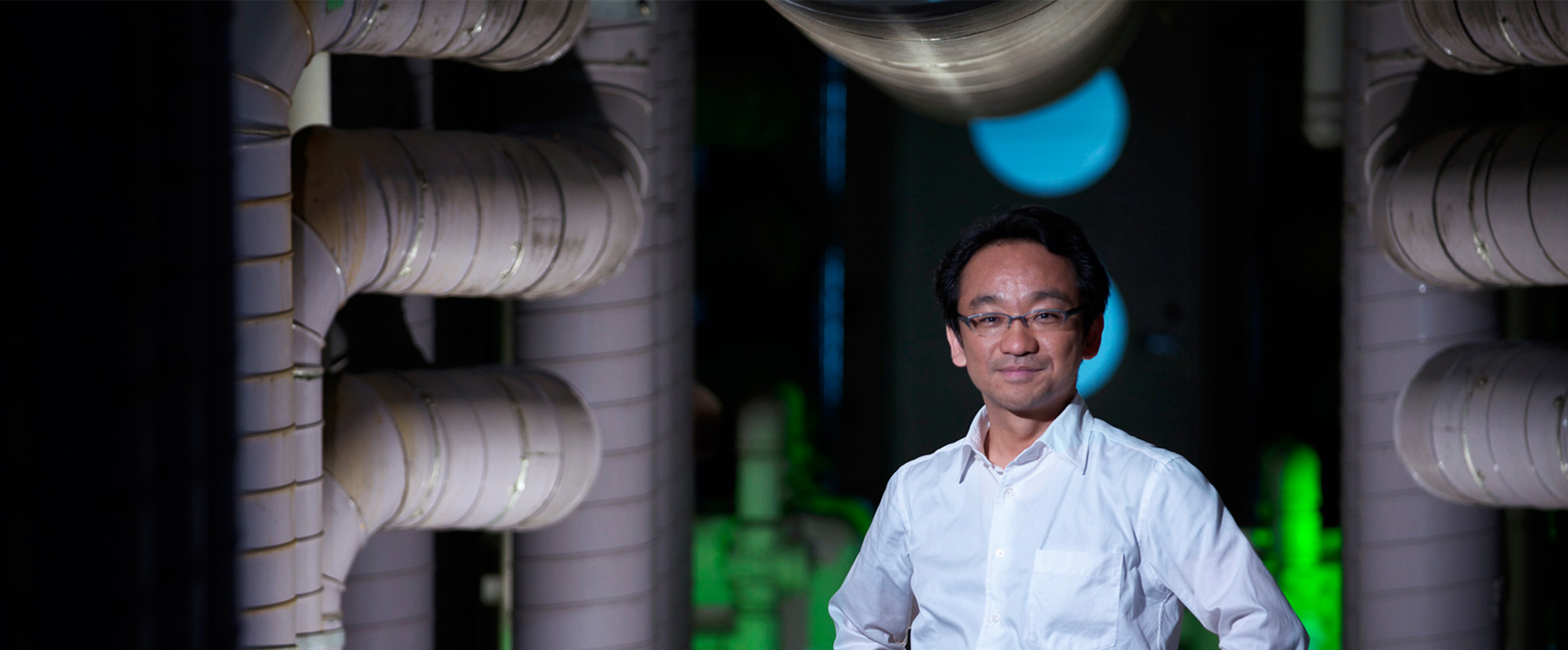-

-
Professor Shinichi Komaba has built a career on taking the road less traveled.
Komaba hopes that his road will help guide the world to a more environmentally sustainable future and more affordable energy infrastructure."In my laboratory, we work to develop new rechargeable batteries with advanced performance in energy, safety and price," Komaba explains.
Komaba has a powerful dream: he and his team seek to help bring the world commercially available rechargeable sodium-ion batteries. In doing so, he has spent the better part of the last decade as a maverick seeking to rewrite the conventional wisdom of rechargeable batteries. And he is halfway there.
-
Lithium-ion batteries have become the standard for practical rechargeable batteries since hitting the market in 1991. They are light and have the best energy performance of any battery, making them optimal for devices such as mobile phones, computers and cameras.
"When I first started battery research in earnest 15 or so years ago, mobile phones were just coming into vogue. There was a race on to create lighter and lighter batteries," Komaba says.
All eyes were on lithium-ion batteries. At conferences, nearly all the papers were essentially about enhancing lithium-ion battery performance. Komaba says it was almost as if the consensus was that basic battery research was finished.
-

"Everyone was researching lithium-ion batteries. It was such a narrow focus. That wasn't for me. I wanted to do something different," he explains.
So the contrarian-thinking Komaba ultimately struck out in a different direction. While lithium-ion batteries have much to recommend them, they also have a downside: lithium is a limited resource, lithium-ion batteries require costly chemicals such as cobalt and their safety record is not entirely satisfactory to explosion accidents. In particular, the rising demand for lithium-ion batteries due to new applications—such as in tablet computers and electric vehicles (EVs)—has highlighted the scarcity issue. In contrast, sodium is nearly ubiquitous, much less expensive and sodium-ion batteries can conceivably be made using existing battery manufacturing plants.
-


-
Against this backdrop, Komaba decided to focus on sodium-ion batteries.
Everyone said it couldn't be done. Scientists and other experts have long said that sodium-ion batteries were a pipe dream.
Today that is no longer the case. Komaba has proved these naysayers wrong. Barriers to a commercial sodium-ion rechargeable battery remain, but many have fallen.
The first came in 2004. Research by a professor at Kyushu University, in southern Japan, demonstrated that sodium worked well with iron much as lithium works well with cobalt for battery charge and discharge cycles.
"At the time, I was one of very few people studying this area and the results really stunned me," Komaba explains.
Sensing greater academic opportunity and relishing the idea of being located in a hotbed of scientific research, Komaba joined TUS in 2005. The university has proved a perfect fit.
Komaba says that being surrounded by nearly 30 other laboratories and experts working in other areas of chemistry and physics often results in hints and information that contribute to his own research.
"You can study battery science anywhere, but Japan has long been at the forefront of battery research. And I don't think there is anywhere else in the world that you can conduct this level of cutting-edge research so close to and working with so many companies that actually bring this technology to market," Komaba says.
Once at TUS, Komaba focused on accomplishing what many said was impossible: creating a sodium-ion battery with high-energy density and a satisfactory cycle life. After much work crafting a workable electrolyte, in 2009, he and his team created the world's first working sodium-ion battery.
His research has ignited a surge in interest in and research on sodium-ion batteries.
"Five years ago, apart from us there were only three or four places doing similar research. Now there are hundreds of researchers all over the world studying sodium-ion batteries," he explains.
Remaining barriers include increasing the storage energy of these batteries and developing better electrode materials, areas that Komaba and a growing group of researchers are actively pursuing.
"In terms of energy capacity and battery performance, right now I would say we are the top in the world, but in recent years competition has been intensifying," Komaba says.
-
The modest Komaba attributes much of his success so far in the electrochemical storage field to luck and the work of colleagues and predecessors, but clearly years of unflagging persistence have been key.
His lab team of 33 people includes 27 students, a French-educated postdoctoral researcher from Morocco and a postdoctoral researcher from China.
Komaba believes that stepping outside of one's comfort zone can be crucial. He himself was a postdoctoral research fellow from 2003 to 2004 at the Institut de Chimie de la Matière Condensée de Bordeaux, in France.
-

"Walking the streets in France, people would often think that I was Chinese. I always tell my students that they should experience being called an ‘outsider' at least once in life. It broadens your perspective," Komaba says.
Apart from Bordeaux wine, in France, Komaba was drawn to the tendency of researchers to conduct scientific research for the sake of research—to exhaust all possibilities with the aim of deepening understanding—rather than blindly pursue improved performance, which he says is the norm in Japan.
Likewise, Komaba's lab has an international bent, working with nearly ten companies—from chemical companies and electronics firms to automobile manufacturers—both domestic and international corporations.
Japan has been at the cutting-edge of battery invention for more than a century. Komaba is the latest in a long line of TUS pioneers in battery research and development. In fact, TUS graduate and engineer Sakizo Yai invented the dry-cell battery in 1887.
And, like Yai, Komaba's achievements are beginning to receive recognition. In May 2014, he was one of five recipients of California Institute of Technology's inaugural Resonate Award, which recognizes emerging innovators in the field of energy science and sustainability. The award noted Komaba's work "in developing materials for safe, efficient battery storage for electric vehicles and the grid."
It is still early days. Sodium-ion batteries have only been around for a few years. While they will always be heavier than their lithium brethren, Komaba sees potential niche avenues—including zero-emission vehicles and stationary use—where they could prove to be inexpensive, green and sustainable energy solutions.
"Lithium-ion batteries have been around for 30 years. Sodium-ion batteries have only been around for five. It is impossible to say what advancements we will see and where we will be in 20 years," says an optimistic Komaba, who believes that ultimately the performance of sodium-ion batteries could potentially prove to be similar to or in some ways better than lithium-ion batteries.
If all goes well, the name Shinichi Komaba could end up firmly entrenched in the annals of battery history.



After obtaining his Ph.D. from Waseda University, Professor Shinichi Komaba joined Iwate University as a research associate, later working as a post-doctoral research fellow at the CNRS-ICMCB, France. He joined the faculty of Tokyo University of Science in 2005. Professor Komaba has developed electrode, electrolyte, and binder materials for sodium-ion batteries to develop safer lithium-ion battery systems. He received the inaugural Resonate Award in 2014 for his research on energy storage seeking to develop safer and more efficient batteries.




